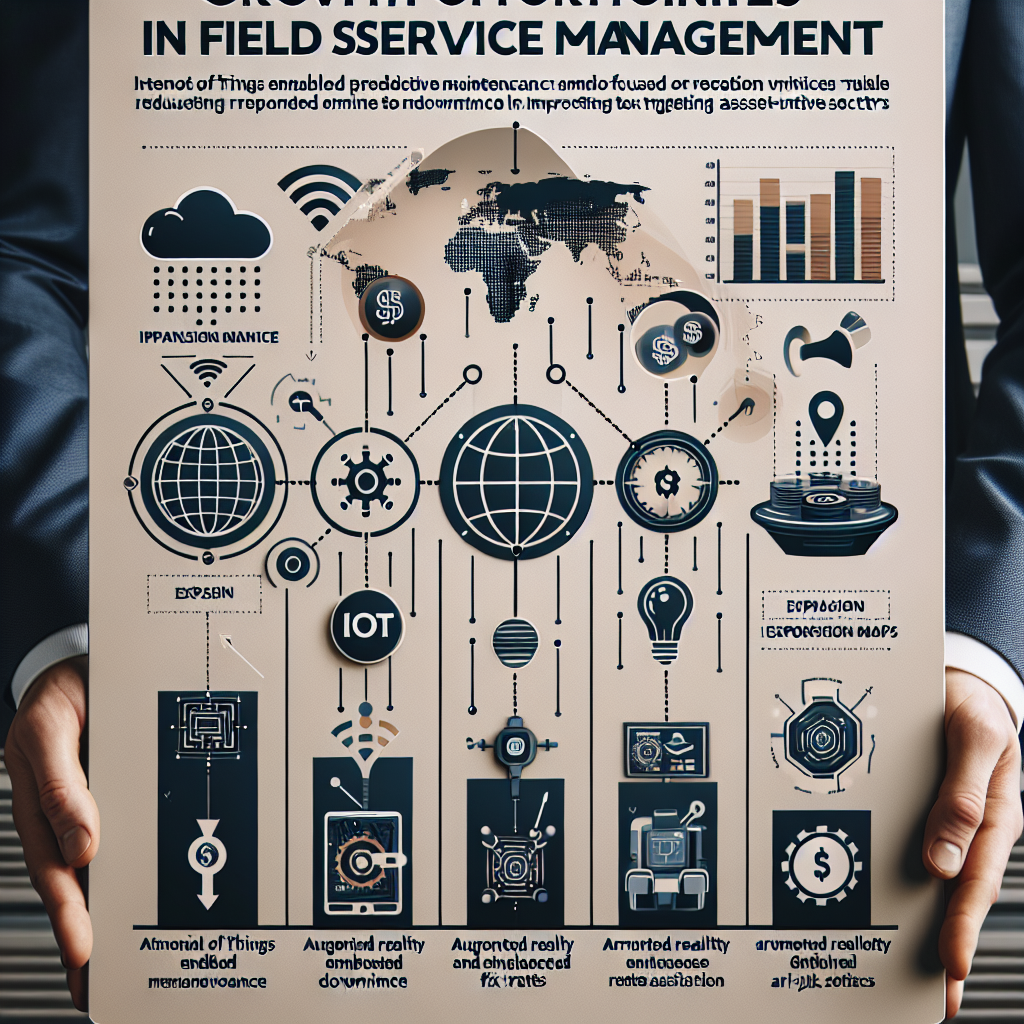Transform Field Service Operations with AI-Powered FSM Software Solutions
Optimize enterprise operations with intelligent FSM software for digital transformation.

Executive Summary
The Field Service Management (FSM) software market — covering enterprise and industrial software solutions within information technology — was valued at $4.91 billion in 2023 and is projected to reach $11.78 billion by 2030, reflecting a compound annual growth rate (CAGR) of 13.3% from 2023 to 2030.
Key Growth Drivers
- Digital transformation and cloud/mobile adoption: Accelerating demand for remote work capabilities and real-time dispatching.
- Integration of IoT, AI, and analytics: Enabling predictive maintenance, smarter scheduling, and improved resource utilization.
- Operational efficiency and customer experience: Growing investment in automation to enhance productivity and service quality.
Market Outlook
Overall outlook: Positive. The FSM market is positioned for sustained, multi-year growth driven by:
- Strong cross-industry demand across telecommunications, utilities, construction, and manufacturing.
- Ongoing vendor innovation and expanding use cases that continue to strengthen market adoption.

13.3%
CAGR (2024–2030)
$4.91 billion
Current Market Size (2025)
$11.78 billion
Projected Market Size (2030)
M&A and Investment Activity
Financial & Investment Considerations
Typical Business Models
1. Subscription SaaS (cloud-hosted)
Recurring annual recurring revenue (ARR) model with high gross margins and minimal incremental capex.
Pros: Predictable revenue, scalability, and higher valuation multiples.
Cons: Requires sustained sales and marketing (S&M) investment and proactive churn management.
2. Services-led / Hybrid
Combines subscription revenue with significant professional services and implementation components.
Pros: Faster initial bookings and stronger customer relationships.
Cons: Lower gross and EBITDA margins, higher hiring needs, and greater working-capital requirements.
3. Perpetual License / On-prem + Maintenance
Generates higher upfront revenue and capital intensity due to installation and hosting demands, often with longer sales cycles.
Pros: Premium pricing and greater enterprise control.
Cons: Lower recurring revenue visibility and higher capex/depreciation burden.
4. Channel / Partner-led SMB Distribution
Focuses on indirect sales through partners and resellers, reducing direct S&M costs but often at lower average selling prices (ASPs).
Pros: Scalable reach and reduced go-to-market expenses.
Cons: Margins depend heavily on partner economics and revenue-sharing agreements.


Typical Margin Profile
Gross Margin: Typically ~70–90% for cloud-native FSM SaaS providers. Margins are lower (~40–70%) where professional services, on-premise hosting, or large implementation projects represent a significant share of revenue.
EBITDA Margin: Early-stage or services-heavy vendors often operate at negative to low single-digit margins, while scaled, product-led SaaS companies generally target ~10–30% EBITDA.
Key Variance Drivers:
- Revenue mix between recurring subscriptions and one-time implementation fees
- Level of owned hosting infrastructure versus third-party cloud
- Accounting treatment of support and onboarding within COGS
- Scale effects on fixed R&D and hosting costs
- Sales and marketing efficiency (CAC payback period and upsell performance)
Investor Appetite
Level: Medium–High
Rationale: The FSM sector shows steady market growth and favorable unit economics, driven by recurring revenue and strong software gross margins from cloud-based deployments. Upsell potential and ongoing market consolidation also enhance investor appeal.
However, investment appetite is tempered by factors such as services intensity (which can reduce margins), a fragmented competitive landscape, implementation and change-management risk, and sensitivity to sales and marketing efficiency (CAC/LTV).
Companies that successfully scale annual recurring revenue (ARR) while managing services mix and customer acquisition costs (CAC) often achieve Rule-of-40 performance and attract stronger investor interest.


Capex Intensity
Level: Low–Medium
Indicative capex is typically ~1–5% of revenue for cloud-first FSM SaaS providers, reflecting capitalized R&D and internal IT investments. Capex may rise to 5–10%+ when vendors own data centers or significantly capitalize platform or hardware assets.
Major capex categories include:
- Capitalized R&D (product development)
- IT infrastructure and data-center hardware (if owned)
- Platform modernization or re-platforming initiatives
- Office facilities and equipment
On-premise or hardware-centric deployments generally lead to higher capex requirements and differences in depreciation timing compared to SaaS-based peers.
Conclusion & Investment Implications
The field service management (FSM) software market continues to grow at a robust pace, driven by digital transformation, mobile workforce optimization, and the adoption of cloud-based solutions. Valued at $4.91 billion in 2023, the global FSM market is expected to reach approximately $11.78 billion by 2030, reflecting a compound annual growth rate (CAGR) of 13.3% from 2023 to 2030.
This sustained growth underscores expanding investment in automation, AI-powered scheduling, and customer-experience tools across service-intensive industries. Strategic M&A activity—such as recent acquisitions by ServicePower, Valsoft, JDM Technology, and Everfield—illustrates consolidation momentum as vendors seek to broaden product suites and global reach.
With continued digital adoption and increasing pressure to improve first-time fix rates, FSM software is poised to remain a key enabler of operational efficiency and customer satisfaction over the coming decade.




